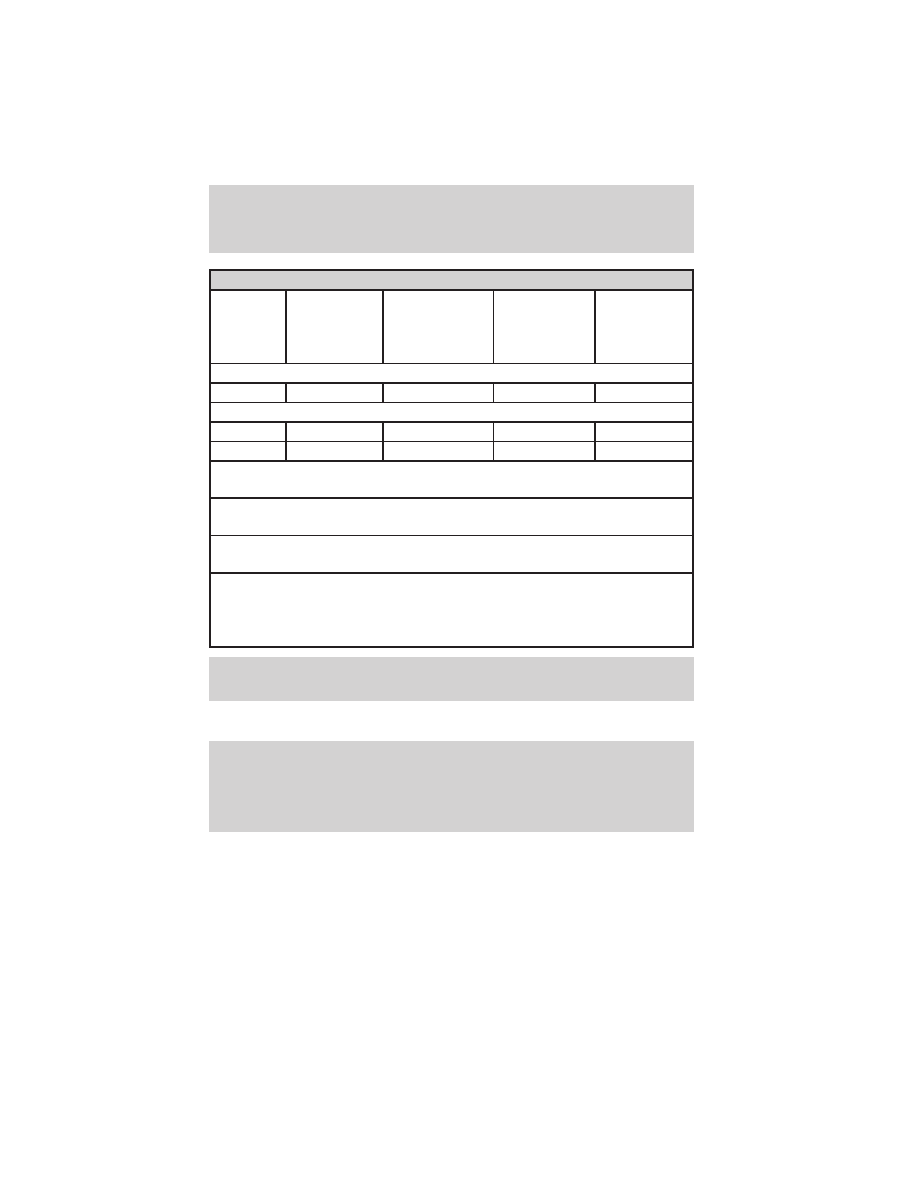Mazda B2300 (2003 year). Instruction - part 9

4x4 w/automatic transmission
Engine
Rear axle
ratio
Maximum
GCWR - kg
(lbs.)
Maximum
trailer
weight - kg
(lbs.)
Maximum
frontal area
of trailer -
m
2
(ft
2
)
Regular Cab
3.0L
All
3,402 (7,500)
1,742 (3,840)
4.64 (50)
Cab Plus/Cab Plus 4
3.0L
All
3,402 (7,500)
1,651 (3,640)
4.64 (50)
4.0L
All
4,309 (9,500)
2,504 (5,520)
4.64 (50)
For high altitude operation, reduce GCW by 2% per 300 meters (1, 000
ft.) of elevation.
For definition of terms used in this table, see Vehicle loading earlier
in this chapter.
To determine maximum trailer weight designed for your vehicle, see
Calculating the load earlier in this chapter.
Maximum trailer weight is shown. The combined weight of the
completed towing vehicle (including hitch, passengers and cargo) and
the loaded trailer must not exceed the Gross Combined Weight Rating
(GCWR).
WARNING: Do not exceed the GVWR or the GAWR specified on
the certification label.
The certifcation label is found on the driver’s door latch pillar.
WARNING: Towing trailers beyond the maximum recommended
gross trailer weight exceeds the limit of the vehicle and could
result in engine damage, transmission damage, structural
damage, loss of vehicle control, vehicle rollover and personal
injury.
Preparing to tow
Use the proper equipment for towing a trailer and make sure it is
properly attached to your vehicle. See your dealer or a reliable trailer
dealer if you require assistance.
Driving
134